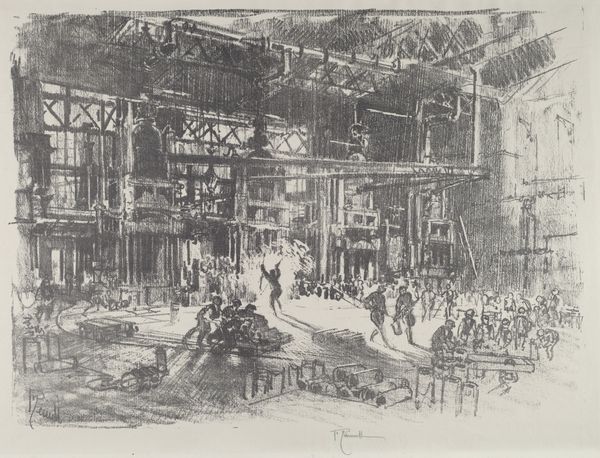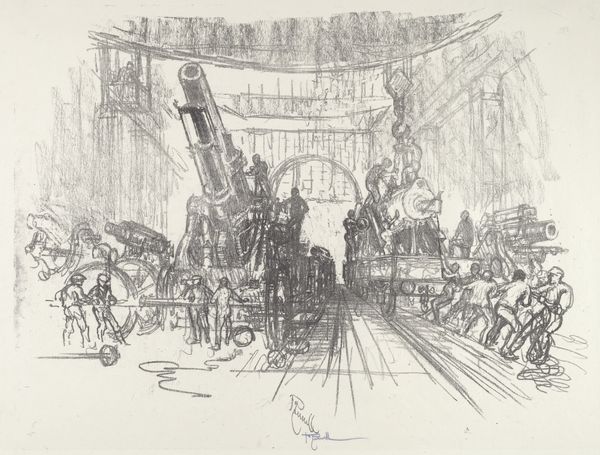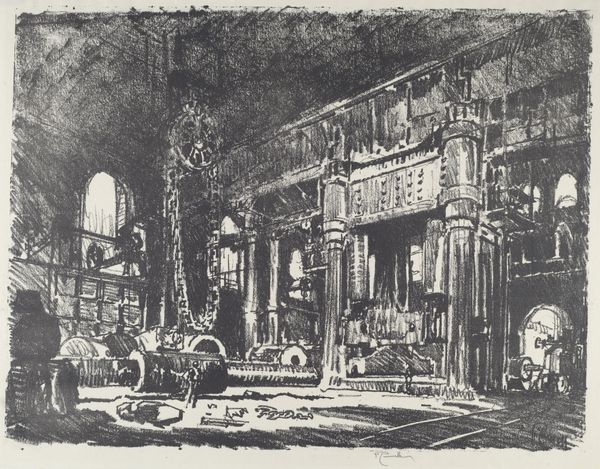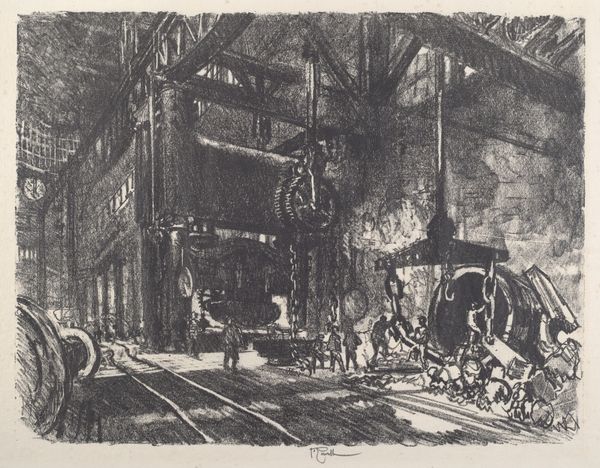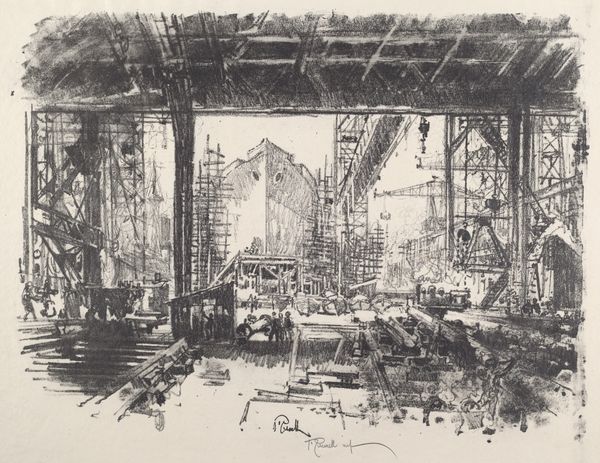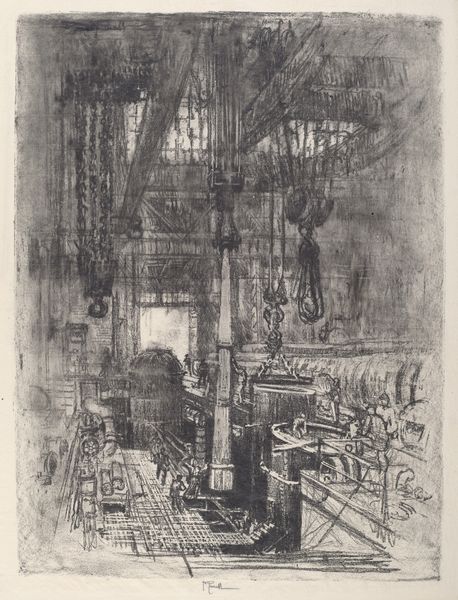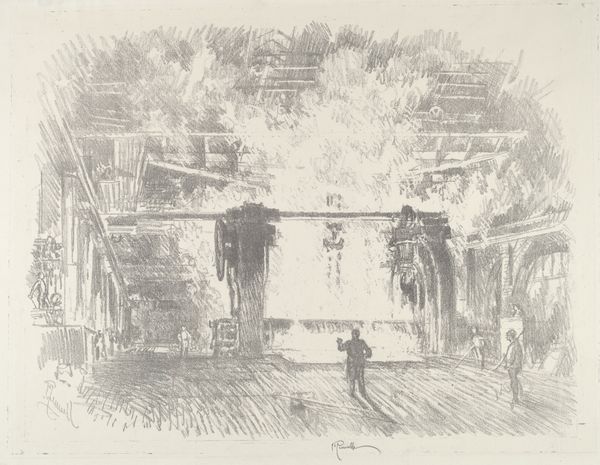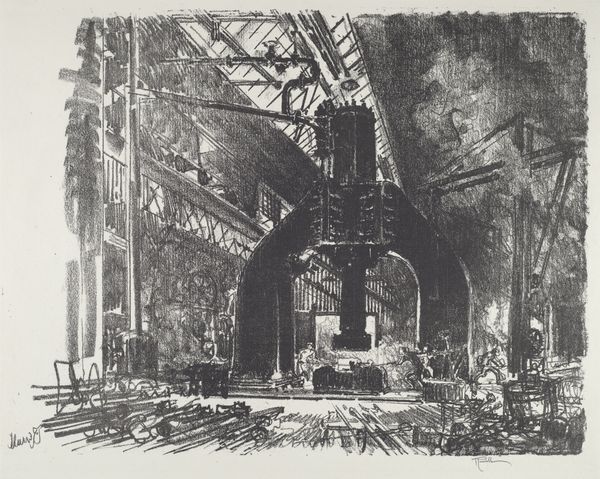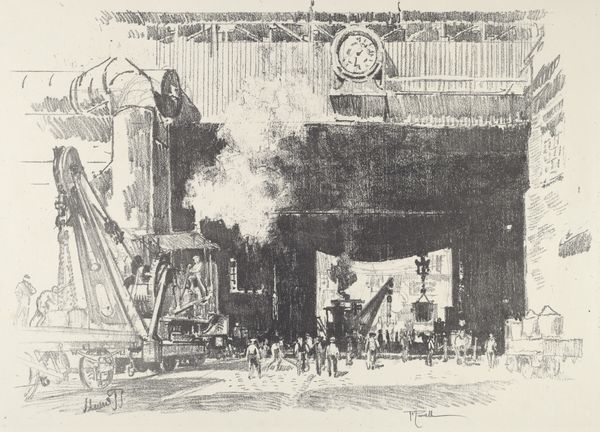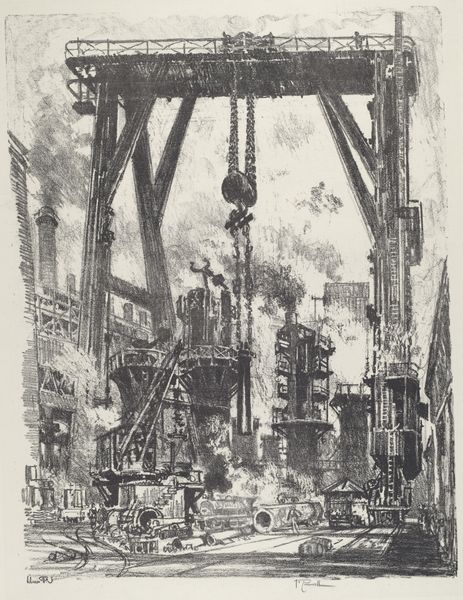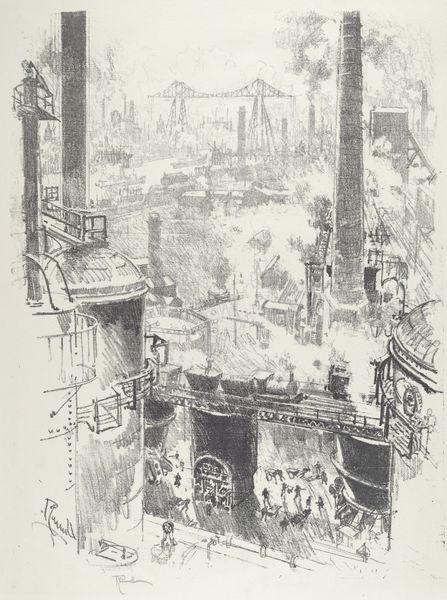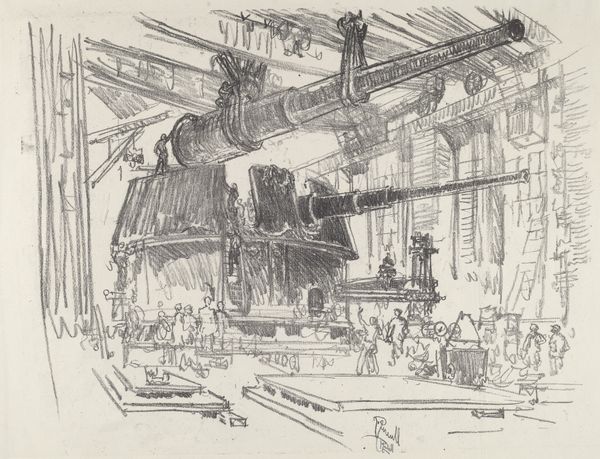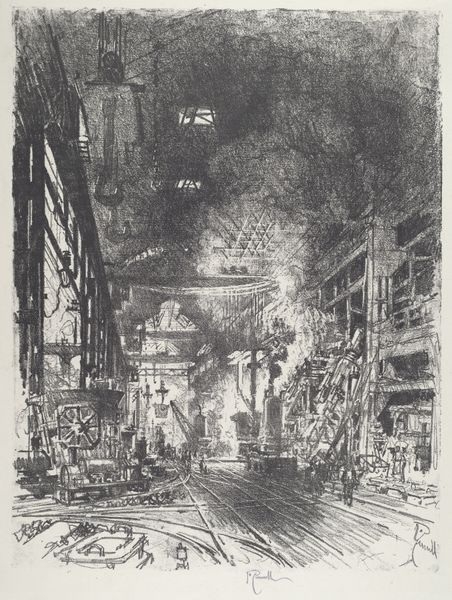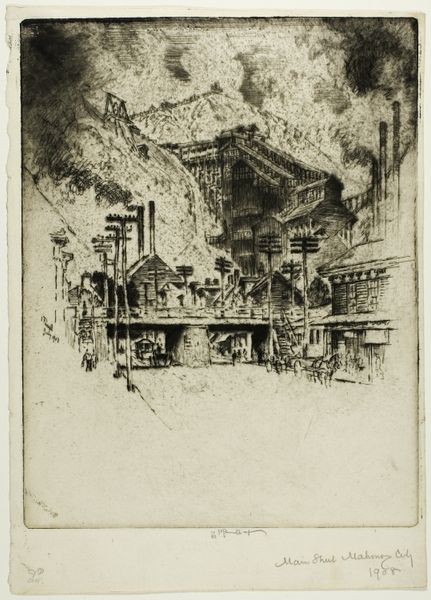
print, etching
# print
#
etching
#
landscape
#
modernism
Copyright: National Gallery of Art: CC0 1.0
Curator: Welcome. We’re looking at Joseph Pennell’s etching, "Making Pig-Iron," created in 1916. It’s a striking portrayal of industry. Editor: Yeah, you know, looking at this thing, it feels heavy, doesn’t it? Not just because of the subject matter, but in the way Pennell used those strong, dark lines to almost weigh the whole scene down. Makes you feel the grit, the heat, everything. Curator: Precisely. Observe how Pennell utilizes the etching technique to define form and texture. The lines vary in thickness and depth, which create the chiaroscuro effect lending the composition its stark contrasts. The composition adheres to rigorous aesthetic criteria. Editor: Right, I see what you mean. So, he’s using the lines themselves almost as symbolism, kind of? But the guys working, those small figures way in the back… there’s something heroic in showing how little we can be. It makes me think of us today in the face of huge global industry. I wonder what he thought. Curator: One interprets Pennell’s commentary in its formal deployment of masses and voids. He isn't merely documenting industry; he's orchestrating a visual dialectic between labor and machinery. Observe, too, the linear scaffolding structures in contrast to the curves of the primary machine. Editor: A visual… Oh! He’s putting together opposites, that is. I get you! But, still, the romance in this thing— the smokestacks… it's almost sci-fi, steampunk… without even meaning to. The promise—it’s totally gone, of course, a century on. You could cut your finger on the irony, really. Curator: Agreed; that tension is inherent in the artistic paradox: to aesthetically elevate the working of pig iron at the expense of critiquing industry itself. This formal dynamic remains. Editor: Absolutely. A haunting piece. Thanks for untangling it. Curator: My pleasure.
Comments
No comments
Be the first to comment and join the conversation on the ultimate creative platform.
